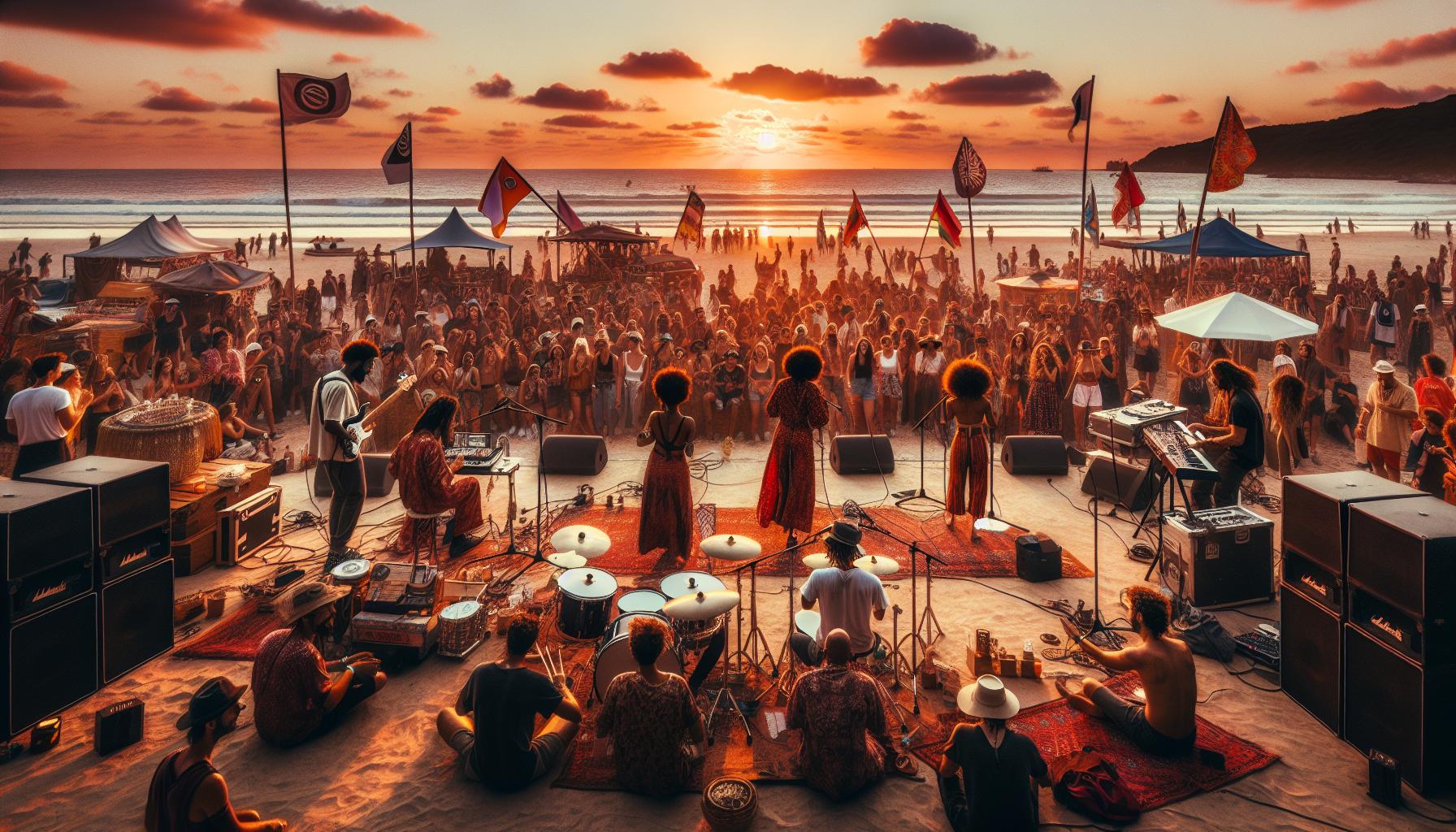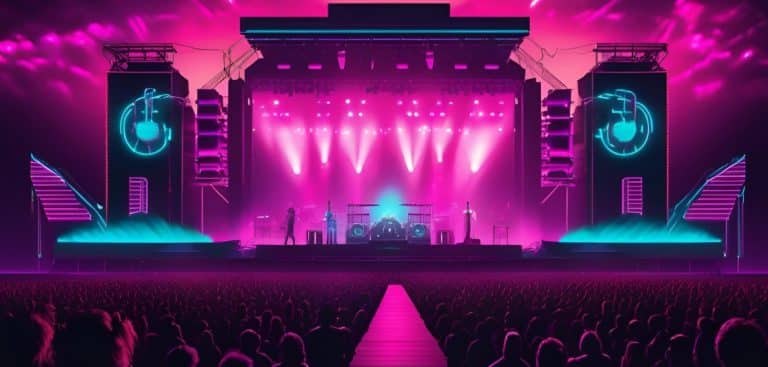Dreaming of creating a buzz-worthy destination festival that draws crowds from far and wide? You’re in for an exciting journey! Destination festivals have become increasingly popular, offering attendees a unique blend of music, culture, and travel experiences.
From choosing the perfect location to curating an unforgettable lineup, there’s a lot that goes into making your festival a success. But don’t worry – with the right planning and promotion strategies, you’ll be well on your way to hosting an event that people will be talking about for years to come.
In this guide, we’ll walk you through the essential steps to create and promote a destination festival that stands out in today’s competitive entertainment landscape. Whether you’re a seasoned event planner or a first-time organizer, you’ll find valuable insights to turn your festival dreams into reality.
Key Takeaways
- Choose a unique location that aligns with your festival theme and offers necessary infrastructure for a memorable experience
- Curate a diverse lineup of entertainment, including music, art, and cultural activities to engage attendees beyond typical offerings
- Develop a strong brand identity and leverage digital marketing strategies to reach your target audience effectively
- Create varied ticket packages and implement strategic pricing to maximize revenue and attract different audience segments
- Focus on enhancing visitor experience through excellent customer service, local cultural integration, and comprehensive safety measures
Understanding Destination Festivals
What Is a Destination Festival?
A destination festival is a large-scale event that attracts attendees from various locations beyond the local area. These festivals combine music, art, or cultural experiences with the allure of a unique or exotic location. Destination festivals often span multiple days and offer immersive experiences that go beyond typical concert or event offerings.
- Economic impact: Destination festivals bring significant revenue to the host location through tourism, accommodation, and local business patronage.
- Brand recognition: Successfully executed festivals enhance the reputation of both the organizers and the destination itself.
- Cultural exchange: These events facilitate interactions between diverse groups of attendees and local communities.
- Extended stays: Attendees often turn the festival into a longer vacation, exploring the surrounding area.
- Repeat visitation: Positive experiences encourage attendees to return to the destination in the future.
- Media attention: Unique locations and high-profile lineups attract substantial media coverage, increasing visibility.
- Off-season tourism boost: Festivals scheduled during slower tourism periods can revitalize local economies.
- Partnership opportunities: Collaboration with local businesses and sponsors creates mutually beneficial relationships.
- Community pride: Successful events foster a sense of pride and unity among local residents.
- Innovative programming: The destination setting allows for creative and unconventional event elements that set the festival apart.
Planning Your Festival
Choosing the Right Location
Select a location that aligns with your festival’s theme and offers the necessary infrastructure. Consider factors such as accessibility, capacity, and local regulations. Evaluate potential venues based on their proximity to accommodations, transportation hubs, and amenities. Research the area’s climate and typical weather patterns for your chosen dates to ensure optimal conditions for outdoor events.
Determining the Festival Theme and Concept
Develop a unique theme that resonates with your target audience and sets your festival apart. Define your festival’s core values and artistic vision to guide programming decisions. Create a cohesive concept that integrates music, art, and cultural elements seamlessly. Research market trends and competitor events to identify gaps and opportunities for innovation in your festival offerings.
Setting a Budget and Timeline
Create a comprehensive budget that accounts for all aspects of festival production, including venue costs, talent fees, and marketing expenses. Establish a realistic timeline for planning, promotion, and execution of your festival. Allocate resources strategically, prioritizing essential elements while maintaining flexibility for unexpected costs. Develop contingency plans and set financial milestones to track progress throughout the planning process.
Also Read: 10 Smart Ways to Cut Music Festival Costs Without Sacrificing Quality
Creating the Festival Experience
Curating Entertainment and Activities
Curate a diverse lineup of entertainment and activities to captivate your audience. Book headline performers, up-and-coming artists, and local talent to create a well-rounded musical experience. Include interactive art installations, workshops, and cultural performances to engage attendees beyond music. Organize themed areas or stages catering to different genres or interests. Incorporate unique experiences like sunrise yoga sessions, food and beverage tastings, or immersive theater performances to set your festival apart.
Designing the Festival Layout
Design an efficient and engaging festival layout to enhance attendee experience. Create distinct zones for different activities, ensuring smooth crowd flow and minimizing bottlenecks. Position main stages strategically to prevent sound bleed and optimize viewing angles. Include ample rest areas, shade structures, and water stations throughout the grounds. Designate spaces for food vendors, merchandise booths, and sponsor activations. Implement clear signage and wayfinding elements to help attendees navigate the festival site easily.
Arranging Accommodation and Transportation
Provide diverse accommodation options to suit various budgets and preferences. Partner with local hotels, hostels, and campgrounds to offer exclusive rates for festival-goers. Set up on-site camping facilities with amenities like showers, lockers, and charging stations. Arrange shuttle services from nearby airports, train stations, and city centers to the festival grounds. Collaborate with ride-sharing companies to create designated pick-up and drop-off zones. Implement a robust parking management system for attendees driving to the event. Consider offering eco-friendly transportation options like bike rentals or carpooling incentives to reduce the festival’s environmental impact.
Marketing and Promotion Strategies
Developing a Strong Brand Identity
Create a distinctive festival brand that resonates with your target audience. Design a memorable logo and establish a consistent visual style across all marketing materials. Choose a color palette and typography that reflect the festival’s theme and atmosphere. Craft a compelling brand story that highlights the unique aspects of your destination festival and its connection to the location. Make sure you customize your event page according to your event theme.
Leveraging Social Media and Digital Marketing
Utilize social media platforms to build anticipation and engage potential attendees. Create content calendars for each platform, sharing behind-the-scenes glimpses, artist announcements, and interactive posts. Implement targeted social media advertising campaigns to reach your ideal audience.
Also Read: 10 Essential Types of Online Content to Attract Ticket Buyers to Your Music Festival
Develop an SEO-optimized website with user-friendly navigation and mobile responsiveness. Use email marketing to nurture leads and provide exclusive updates to subscribers.
Partnering with Local Businesses and Tourism Boards
Collaborate with local businesses to cross-promote your festival and offer unique experiences to attendees. Partner with hotels, restaurants, and attractions to create festival packages and special deals. Work with tourism boards to integrate your event into regional marketing initiatives. Engage local influencers and media outlets to generate buzz and showcase the destination’s appeal. Develop co-branded merchandise with local artisans to create authentic souvenirs and support the community.
Implementing Effective Sales Techniques
Creating Ticket Packages and Pricing Strategies
Develop diverse ticket packages to cater to different audience segments and maximize revenue. Offer tiered pricing options such as general admission, VIP, and premium experiences. Create bundle packages that include accommodation, transportation, or exclusive perks to increase perceived value. Implement dynamic pricing strategies based on demand and timing, adjusting prices as the event date approaches. Consider offering payment plans for higher-priced tickets to make them more accessible to a wider audience.
Utilizing Early Bird and Group Discounts
Launch early bird ticket sales with limited-time discounts to generate initial buzz and secure early revenue. Offer group discounts to encourage bulk purchases and incentivize attendees to bring friends. Implement a referral program that rewards existing ticket holders for bringing new customers. Create flash sales or limited-time promotions during key periods to boost ticket sales. Use scarcity tactics by releasing tickets in phases or offering exclusive packages in limited quantities to create urgency.
Setting Up an User-Friendly Booking System
Choose a reliable festival ticketing platform with a user-friendly interface and mobile optimization. Implement a streamlined checkout process with minimal steps to reduce cart abandonment. Integrate secure payment gateways that support multiple payment methods, including credit cards and digital wallets. Provide clear information about ticket types, prices, and included amenities on the booking page. Implement a reservation system that allows users to hold tickets for a limited time before completing the purchase. Set up an automated email confirmation system to provide ticket details and essential event information to buyers immediately after purchase.
Enhancing the Visitor Experience
Providing Excellent Customer Service
Train staff to deliver exceptional service at every touchpoint. Implement a centralized information hub for quick query resolution. Set up multiple communication channels including on-site help desks social media and a dedicated festival app. Create a feedback system to address issues promptly and improve future experiences.
Incorporating Local Culture and Attractions
Integrate local traditions and customs into the festival programming. Showcase regional cuisine through food vendors and culinary demonstrations. Partner with nearby attractions to offer discounted or packaged experiences. Create guided tours or excursions that highlight the destination’s unique features. Display local art and crafts throughout the festival grounds.
Ensuring Safety and Security Measures
Develop a comprehensive security plan with trained personnel and surveillance systems. Implement clear emergency protocols and communication channels. Set up medical stations staffed with qualified professionals. Use RFID wristbands for secure entry and cashless transactions. Establish designated safe spaces and support services for attendees. Conduct regular safety drills with staff and coordinate with local law enforcement agencies.
Post-Festival Evaluation and Growth
Gathering and Analyzing Feedback
Collect comprehensive feedback from attendees, vendors, performers, and staff through surveys and interviews. Analyze social media mentions, reviews, and online discussions to gauge overall sentiment. Create a detailed report highlighting strengths, weaknesses, and areas for improvement. Use data visualization tools to present feedback trends and patterns effectively.
Measuring Economic Impact
Conduct an economic impact study to quantify the festival’s contribution to the local economy. Calculate direct spending by attendees on tickets, accommodations, food, and transportation. Measure indirect economic benefits such as increased tourism, job creation, and business growth. Partner with local economic development agencies to access relevant data and expertise for accurate analysis.
Also Read : Festivals Boosting Tourism: Measuring and Maximizing Economic Impact
Planning for Future Editions
Use insights from feedback and economic impact analysis to refine your festival strategy. Identify opportunities for growth, such as expanding capacity, adding new attractions, or targeting untapped market segments. Develop a multi-year plan outlining goals, budgets, and timelines for future editions. Establish partnerships with sponsors, local authorities, and industry stakeholders to secure long-term support and resources.
Also Read: 2024 Music Festival Trends: Shifting Attendance Patterns Revealed
Conclusion
Creating and promoting a destination festival is a complex yet rewarding endeavor. By carefully planning every aspect from concept to execution you can craft an unforgettable experience that benefits your community and attracts visitors from far and wide. Remember to stay flexible adapt to challenges and continuously refine your approach based on feedback and data. With passion creativity and strategic thinking you’ll be well-equipped to launch a successful festival that grows year after year. So go ahead take the plunge and start planning your destination festival today. The journey may be challenging but the results will be worth every effort.
Frequently Asked Questions
What are the main benefits of hosting a destination festival?
Destination festivals offer significant economic benefits to the host location, boost brand recognition for organizers and sponsors, and facilitate cultural exchange. They attract tourists, create jobs, and stimulate local businesses. Additionally, these events can put a destination on the map, creating long-term tourism potential and fostering community pride.
How do you choose the perfect location for a destination festival?
Selecting the ideal location involves considering factors like accessibility, available infrastructure, local regulations, and natural or cultural attractions. Look for a place that aligns with your festival concept, offers sufficient space for activities and accommodations, and has the potential to create a unique atmosphere. Consider the local community’s receptiveness and potential partnerships with local businesses.
What are some key elements in creating a memorable festival experience?
A memorable festival experience combines diverse entertainment, engaging layouts, and interactive elements. Focus on booking a mix of popular and emerging performers, incorporating interactive art installations, and designing efficient festival zones. Provide varied food options, comfortable accommodations, and smooth transportation services. Create opportunities for attendees to connect and share experiences.
How can you effectively market a destination festival?
Effective marketing starts with developing a strong brand identity and leveraging social media engagement. Partner with local businesses, influencers, and media outlets to expand reach. Create compelling content that showcases the unique aspects of your festival and destination. Utilize email marketing, targeted advertising, and early bird ticket promotions to build buzz and drive ticket sales.
What should be considered in the post-festival evaluation process?
Post-festival evaluation should include gathering attendee feedback, analyzing economic impact, and assessing operational efficiency. Review social media sentiment, survey results, and sales data. Evaluate the performance of vendors, staff, and partners. Assess the festival’s environmental impact and community reception. Use these insights to refine strategies and identify growth opportunities for future editions.
You May Also Like:
Festivals Boosting Tourism: Measuring and Maximizing Economic Impact
7 Essential Steps In Creating A Festival Line-Up
Navigating the Pain Points: Achieving Profitability and Sustainability for Festival Organizers



